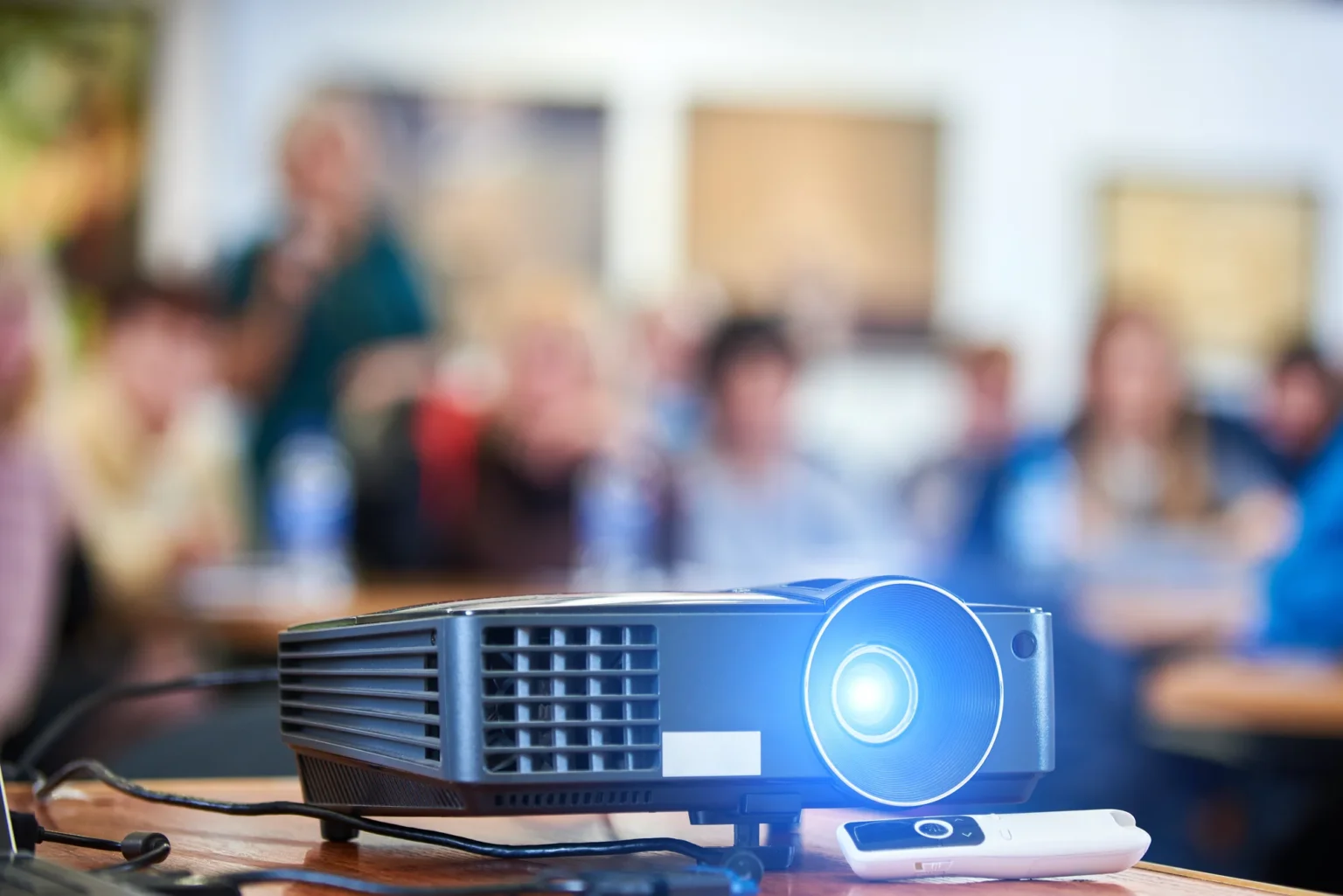A great meetup runs smoothly because it’s well equipped
Whether you’re organising a networking evening or a small conference in Dublin, success depends on the details.
The right conference AV equipment can lift the energy in the room, avoid awkward tech delays, and help you leave a strong impression.
This guide walks you through the essentials, from registration and staging to WiFi and signage, so nothing’s left behind.
AV Equipment That Works When You Need It
Start with the audio/visual basics. Every meetup, no matter the size, benefits from at least one microphone — ideally wireless — to ensure your host or speakers can be clearly heard around the conference room. Check to see if the sound systems automatically connect with mic.
A projector or a large display screen is also essential for slides, video presentations or live demos. You’ll need external speakers if the venue doesn’t provide built-in sound, and always check if additional cables or adapters are required.
HDMI, USB-C and AUX connections are the usual suspects. Bringing your own just in case can save a lot of stress. Some cable management systems are tucked into alcoves to keep a meeting room looking tidy, so a long cable is generally a lifesaver!

Room Setup: Seating, Tables and Staging
Think about how the room will feel as guests enter. For most events, flexible seating works best. Speak with the events team about possible room solutions.
Whether it’s rows for a presentation or a more open layout for networking, keep walkways clear and accessible.
If you’re planning on a panel discussion or keynote speaker, a small stage or platform can make a big difference, both for visibility and atmosphere.
Tables for name tags, brochures or refreshments should be placed logically and avoid bottlenecks.

A Clean, Easy Registration Desk
Think about how the room will feel as guests enter. For most events, flexible seating works best. Speak with the events team about possible room solutions.
Whether it’s rows for a presentation or a more open layout for networking, keep walkways clear and accessible.
If you’re planning on a panel discussion or keynote speaker, a small stage or platform can make a big difference, both for visibility and atmosphere.
Tables for name tags, brochures or refreshments should be placed logically and avoid bottlenecks.

Reliable Internet Setup
As part of your conference planning, don’t underestimate your internet needs. Whether you’re live streaming content, showing cloud-based slides or simply allowing guests to stay connected, stable WiFi is essential.
Test the signal ahead of time, especially in the areas where you’ll be presenting or recording. It’s also helpful to have a backup, like a mobile hotspot.
Be sure to share the network name and password clearly with your guests, either at the entrance or printed on table signage.

Planning to Record or Stream?
If you’re planning to record the event or stream it live, make sure the setup is solid.
A front of room camera mounted on a tripod or even a high-quality phone with a stabiliser works well for most small events in meeting rooms. There probably is no need for a multi conference camera set up, unless you’re planning to monetise the playback.
Audio is just as important, so consider using a headset microphone if you want people to hear clearly during playback.
Don’t forget to test your stream login and connection ahead of time. It’s Murphy’s Law that these things tend to act up just when you need them most.
Another popular theme to enhance user experience is the usage of collaboration tools for interactive whiteboards, live chat or live polls. This helps the audience get engaged into the conversation without having to speak in front of a room.
Branding the Space
Adding simple branding touches helps the event feel polished and professional. Branded banners, digital signage, pull-up signs or even well-designed name tags can create cohesion.
If you’re showing slides, using a template with your logo and social media handles gives your presentation a visual lift. It’s subtle but powerful, and ensures your guests associate the experience with your brand.
If you’re considering a large production, a lot of agencies offer a free design consultation to discuss bringing your idea to life in the conference room.

Refreshments Matter
If your meetup is longer than an hour or two, refreshments make a difference. Providing tea, coffee, water, and light snacks adds a welcoming touch.
You don’t need a full buffet, just something to keep guests comfortable and energised. Try to set up the area neatly, and make sure bins are close by.
If you’re offering food, label any dietary options clearly. It shows thoughtfulness and avoids confusion. Your conference production rests on the power of hospitality and customer service is a pillar of this.

Don’t Skip the Safety Checks
Even for small events, safety should be on the list. Confirm that fire exits are clearly marked and not blocked.
A basic first aid kit should be available at the venue, and it’s wise to assign someone from your team to act as the contact point in case of emergencies.
It’s one of those things you hope never to need, but being prepared builds confidence.

Planning an event in Dublin?
All of our Dublin Conference venues are fully equipped with everything listed above, from Conference room AV equipment and digital screen displays to WiFi and signage.
Our AV team are on hand to help with everything for you, so you can focus on hosting, not troubleshooting.
Download our Conference AV equipment checklist here!






